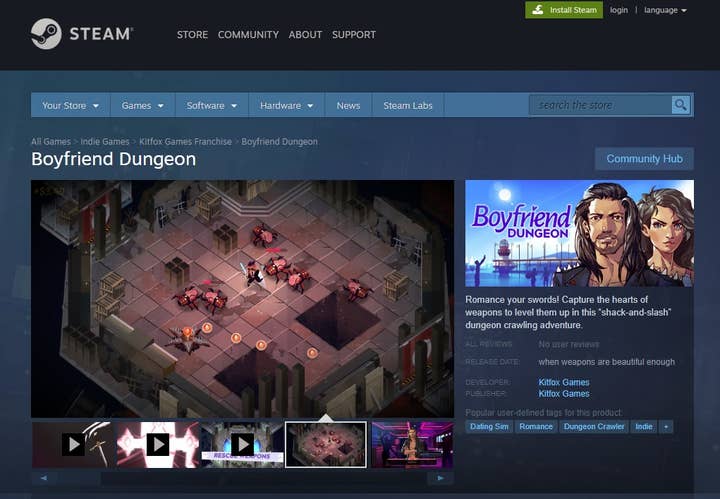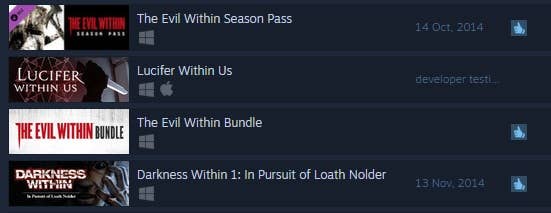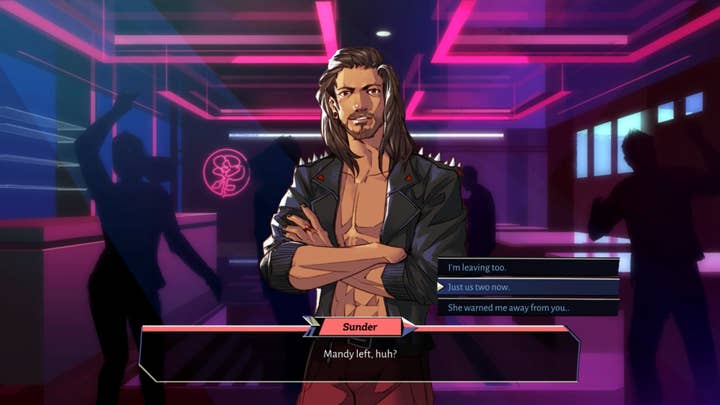A Kitfox guide to marketing on the cheap
Boyfriend Dungeon studio's communications director Victoria Tran offers tips for indies to get the most bang out of their (lack of) bucks
Kitfox communications director Victoria Tran opened her Montreal International Game Summit presentation on "The $0 Marketing Plan" Tuesday with an admission.
"The title of this talk is a lie," Tran said. "I definitely kind of click-baited it. There's no such thing as $0 marketing, because for one, I cost money. Any time, resources, or ability you put into marketing counts as money, and I think that's something people fail to budget for. And that's a lot of the places where indies can falter because they forget that the time you take to put into marketing counts for a lot."
However, if developers are able to invest that time, they can see a significant return. Tran noted that Kitfox does plenty of marketing, but they don't do paid ads or streamer sponsorship, and most of their PR outreach is done in-house. Over the studio's six-year history, it has created its own games like Boyfriend Dungeon, Moon Hunters, and Lucifer Within Us, and is publishing a handful of other developers' titles including Dwarf Fortress and Mondo Museum.
"Marketing isn't magic, obviously," Tran said. "You need to have a good game in order for us to be able to market it, but marketing makes it easier to find. You need to know where your game stands out and how it's different. You need a unique game premise. I think a lot of devs get caught up in thinking they need an extremely new game idea, but that's not actually what we talk about when we say you need a unique game. You just need a game that you can explain to people is new, or seems new. It doesn't actually need to be the most unique game in the world. You need to form your marketing in a way that makes it unique to the player's mind.
"Few people are actually interested in what's better; everyone is interested in what's new"
"So it's not just about being better. Few people are actually interested in what's better; everyone is interested in what's new. So that means you're not constantly comparing yourself to another game, and you're getting your fans excited about something they deem as new. Because it's very hard to actually make an entirely new concept."
That process starts with the hook, the short description that will capture someone's interest in the game and get them to learn more. Tran gave an example of a hook with the name omitted: "[Blank] is a fast-paced 2D action-adventure with challenging combat, a rich story, and gorgeous art." That might sound nice, but Tran pointed out the game to fill in that blank could be Boyfriend Dungeon, Hollow Knight, Dead Cells, or The Messenger. If you take the name of the game and proper nouns out of your hook and it's indistinguishable from the hook of competing or similar games, then you probably need a better hook, Tran said.

"If you need help making something unique, take out everything you would usually use to describe the game, and then try to describe it again without those words," Tran suggested. "So for example, no using story-driven, puzzle, narrative, action, Metroidvania, roguelike... Does it still sound interesting enough to play, and is it easy enough for a non-gamer to understand?"
She added, "Essentially, your hook should elicit some strong emotional reaction, whether it's good or bad. It's not necessarily informative. As long as you can embed a feeling into the player when they read about it -- even before they start playing -- that's when you know you've got a good hook."
However, she noted the hook must actually be core to the gameplay of the game; it won't do to have a cool hook if it's not fundamentally related to what the game is. Additionally, she encouraged doing some market research around the hook; see what competing or similar games have tried and whether or not those approaches worked for them. Do A/B testing on social media, try out different descriptions when introducing the game to people at events and see what connects with them. Ideally, it's a one-sentence description that people will be able to easily repeat to their friends or family as they talk about the game.
"People scroll by the [Steam] capsules really fast so you want something that captures attention"
While it's a little different from the hook, the title of the game is also important, with Tran saying it helps to have a name that people can Google easily. A search for the game shouldn't return a movie by the same name or something else with a large cultural footprint when interested people try to find out more about it.
The title and hook will appear on a game's Steam page, but there are numerous other things to consider about the storefront, Tran said. Contrary to what some might expect, loads of Steam users don't go straight to the trailers when bringing up a store page; they'll often scroll through the screenshots first, so it helps when developers have their most attractive screens up front, with more explanatory but less scintillating shots pushed a little further down the line. Tags can also be helpful, if used properly.
"The 'indie' tag is kinda worthless so tag it with something people would search for and are interested in," Tran said.
Games on Steam also benefit from having store pages link to their various social channels and external websites, and Tran underscored the importance of a good capsule image.
"One of the things you have to consider is how your capsule looks when people scroll by it," Tran said. "People scroll by the capsules really fast so you want something that captures attention so they'll click on it and learn more about it."
Boyfriend Dungeon has had three capsule images in the two years it's been listed on Steam, Tran said, so they've experimented a little with it. At first it had a bright pink capsule that leaned into the romantic element of the game, and that did well at first. But they were concerned people thought it was just a dating sim, so they updated the capsule to a muddier-colored panel with a picture of a dagger on it. That one didn't perform as well, so they swapped it out for its current capsule, which features people (because viewers connect more with faces, Tran explained) and a brighter color that helps it pop out from the Steam background.
So what qualifies as "doing well"? Tran said the studio wants a bare minimum 2% click-through rate from people who see the capsule. It's possible for a game to do considerably better (Tran noted that Mondo Museum is at around 30% at the moment, but that may be inflated by it being a new release and the appeal of the museum name), but 2% is where Kitfox sets the bar. The studio's upcoming game Lucifer Within Us has a click-through rate just under that threshold, so Tran said it's likely to be swapped out in the future.

Tran addressed outreach to journalists and influencers separately, but both were underpinned by the idea that developers should think about the needs of the people they're reaching out to, and try to position their games to fit those needs. Journalists tend to cover games they're personally interested in, stories with newsworthiness, or interesting angles and human interest stories. Influencers need to entertain their audience and experiences they can react to, moments that invite clipping and sharing online. Any in-game functionality that lets them incorporate the audience (say by re-naming characters to members of the chat) is a strong bonus.
"Social is actually notoriously terrible for conversion"
Tran acknowledged Kitfox doesn't do much with streamers because its games are spoiler-heavy and not optimized for streamers' needs, but even just giving a free key can be good enough.
"It might not be as guaranteed as a sponsorship, but people are still willing to work with you and form relationships with you," Tran said. "And that's kind of the important thing when it comes to indies: maintaining the relationships."
When streamers do cover a game, Tran said it's helpful to watch the stream live if possible and tweet out your thanks to them. Additionally, she suggested targeting mid-level streamers because many of the top ones don't actually drive purchases like on might expect; she reasoned much of their audiences tunes in strictly for the streamers' personalities and not in search of new games to discover.
Finally, Tran talked about social media channels. Gathering emails for a newsletter is a good way to start, whether it's with a pencil and pad of paper at an event or by having a sign-up process embedded in a demo (as Boyfriend Dungeon has). Once the newsletter is up, cross-promoting it with Twitter, Discord, and other channels (and vice-versa) is also a must.
"Any time I have any sort of newsletter update, I always link our Twitter and our Discord," Tran said. "Plaster it everywhere. Cross-promote it everywhere. On your trailers, literally wherever you can. Remember to at least link something in your communications with people."
Tran cautioned to limit the number of links to two or three as people will just ignore anything beyond that. And while social channels can help boost awareness, build relationships with fans, and quickly notify you of any problems that crop up with your game, it has one significant drawback.
"Social is actually notoriously terrible for conversion," Tran said. "I'm telling you this because I don't want you to focus all your time on social media... Put effort into social media channels and track how much return you get on them. Once you see trends on how they do for you, you can start to fade out the ones that aren't worth it."
For example, Tran says she sees about a 2-5% conversion rate through Twitter, which she sees as good enough to justify focusing some of her efforts there. Facebook on the other hand is lower, so she essentially ignores it.
Finally, she advised developers to put a little joy into their marketing campaigns.
"It's whatever works for your studio," Tran said. "Since we're indies, we might as well have fun with it. Not everything has to be super sad all the time."
Disclosure: MIGS provided travel and accommodations for GamesIndustry.biz to attend the event.

